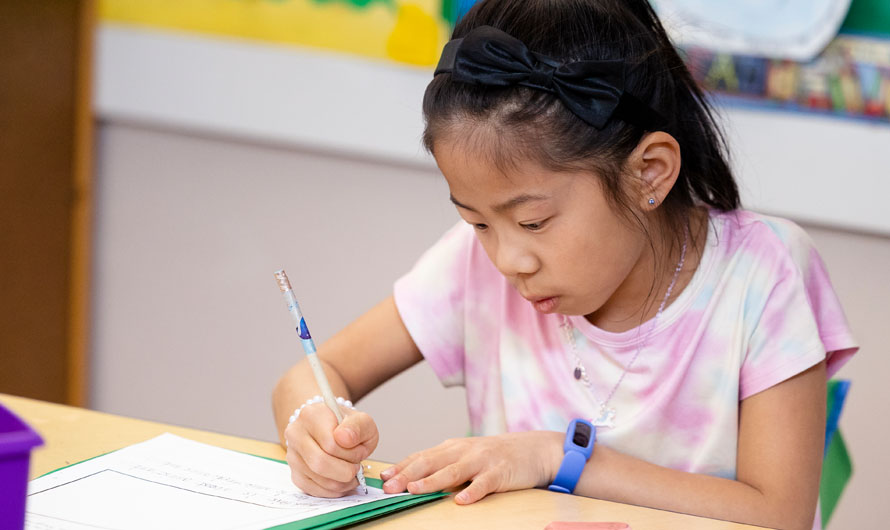Building a Sense of Belonging
Our multiage One/Two class provides students ages six through eight with a nurturing and collaborative community where children are known and respected for their individual strengths. Students who begin the program in first grade spend two years with our One/Two teaching team, ensuring continuous academic and social growth. Our program is also designed to welcome new students in second grade, integrating them into our classroom community and tailoring our program to fit each child’s needs.
Meet the Teachers

A Day in the Life
View a sample schedule which includes an overview of theme, language arts, math, social studies, science, technology, music, art, Spanish, physical education, and library.
Academics
Classroom Themes
Our thematic curricula alternate biennially; they integrate most of the elements of the One/Two curriculum – social studies, language arts, science, math, art, and music, and provide a meaningful context in which students develop their skills. Interwoven throughout is the exploration of Learning for Justice’s four social justice standards of Identity, Diversity, Justice and Action.
“Communities”
Under this theme, students dive deep into the study of anthropology and how anthropologists think. The theme operates under the following essential questions:
- Who am I?
- Who are we? What is a community?
- How do communities thrive?
This theme focuses on the various communities in our lives, considering how communities thrive and the difference between thriving and surviving. We begin the year as anthropologists, which are scientists that study people and cultures. Anthropologists are curious, open to the world, and seek to understand humankind. Throughout this theme, students will interview, observe, question, and explore different people and other communities that inform their lives in order to draw conclusions about lifestyle, habits, and beliefs. We explore ourselves and how we identify, noting our similarities and differences before expanding to think about the diverse communities that are important in our lives such as home, school, town, neighborhood, state, social communities, country, continent, world, and the geographic environment of each – growing to understand how everything is connected.
“Scientists and Inventions”
Under this theme, students dive deep into the study of science and consider it from an interdisciplinary approach. The theme operates under the following essential questions:
- What is a scientist and what do scientists need?
- What are inventions and why do people invent?
- How do inventions impact the world?
We begin the year by considering what science is and how scientists think. Using the book series Zoey and Sassafras by Asia Citro as both a whole-class read-aloud and a source of inspiration, we become scientists ourselves by performing simple experiments and engaging in the scientific process – lab coats and thinking goggles included. We then move to examine simple machines as the building blocks of inventions. We explore, compare, contrast, and research objects of the past with modern technology – a radio with an iPod, a rotary phone with a cell phone. The children also learn about chain reactions and discover how cause and effect work. Shifting the focus to the science of engineering, we study biomimicry and how scientists of the past have found inspiration in the natural world. Students then put their scientific thinking to work by studying water as a natural resource and considering how issues of social justice connect to different communities access to clean water.




















